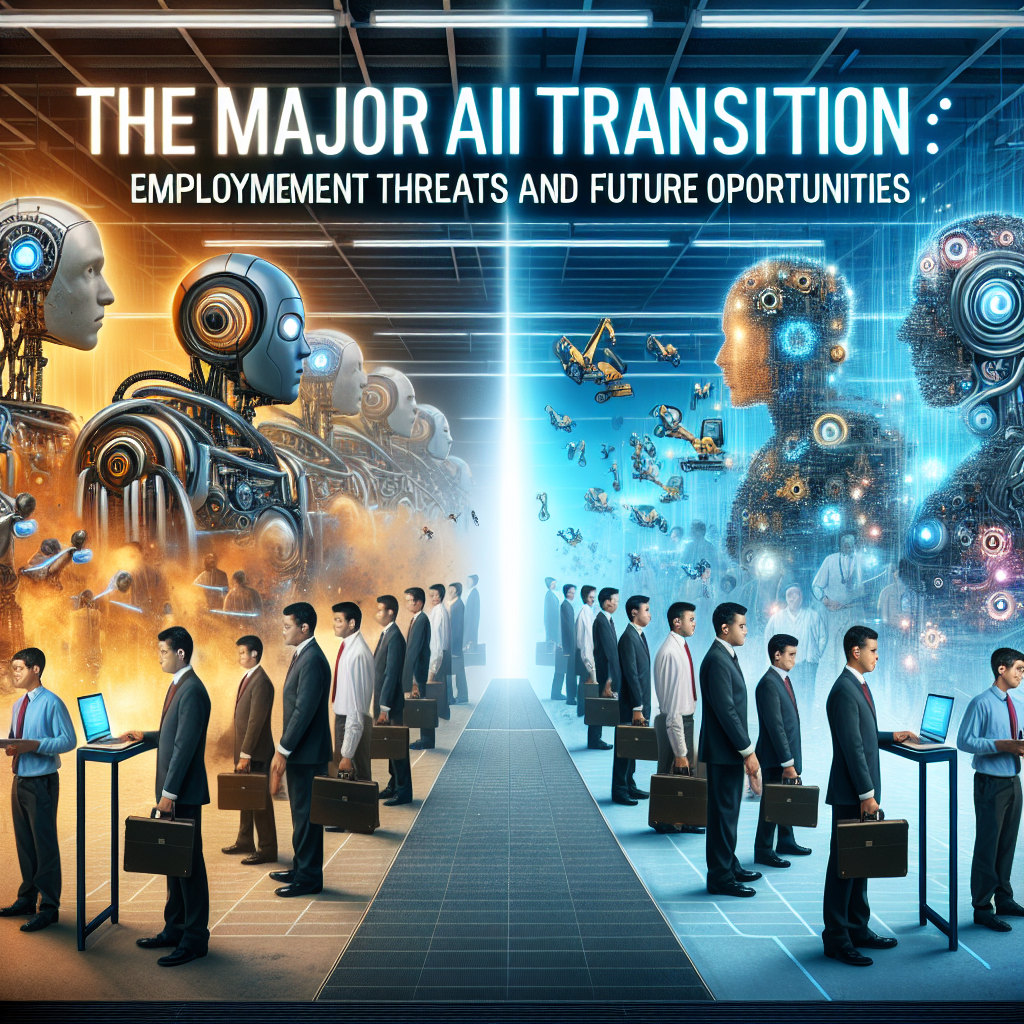The emergence of artificial intelligence (AI) has ushered in a transformative era across multiple sectors, fundamentally altering the global economy, workplace dynamics, and the essence of job functions. As AI technologies evolve rapidly, their implications for employment are significant—introducing both challenges and opportunities that merit thorough exploration.
The Job Disruption Landscape
Vulnerable Job Categories
With the increasing sophistication of AI tools and algorithms, certain job categories are more susceptible to disruption. Manual and repetitive tasks—those easily automated—are typically the first targets for replacement. The following sectors are particularly at risk:
-
Manufacturing and Assembly Line Roles: Robotics-driven automation has optimized production processes, decreasing the need for human involvement in tasks such as assembly and quality assurance.
-
Data Entry and Administrative Positions: AI systems powered by machine learning can effectively manage data-related tasks, jeopardizing roles focused on data entry and basic administrative functions.
-
Retail and Customer Support: The rise of chatbots and AI-enabled customer service solutions threatens job security in retail, as machines can swiftly handle inquiries and transactions without human assistance.
- Transportation: The advent of autonomous vehicles significantly endangers roles in trucking, delivery services, and public transportation.
The Role of Human Skills
While automation poses risks to certain positions, roles that prioritize emotional intelligence, creativity, problem-solving, and interpersonal skills are less likely to be replaced. Professions like therapy, social work, and the arts are inherently human and less vulnerable to machine takeover.
Emerging Opportunities
Although AI presents threats to traditional jobs, it simultaneously creates prospects for new job categories and upskilling opportunities. Here’s a look at potential advantages:
-
New Job Categories: As AI technology expands, new disciplines are developing. Sectors such as data science, AI ethics, and machine learning engineering are experiencing a surge in demand for qualified professionals.
-
Upskilling and Reskilling Initiatives: Companies are recognizing the importance of preparing their workforce with the skills necessary in the AI age. Training in AI literacy, coding, data analysis, and critical thinking can enable workers to transition into roles that utilize AI.
-
Collaboration between Humans and AI: Instead of wholly displacing humans, AI can enhance human capabilities. Jobs that require cooperation between human expertise and AI tools are becoming increasingly common, boosting productivity across diverse sectors.
- Innovative Entrepreneurial Ventures: The AI wave creates opportunities for entrepreneurs to develop cutting-edge solutions, businesses, and platforms. From AI-driven startups to novel service models, the potential for AI-related commerce is vast.
Guiding the Transition
Policy and Governance Frameworks
To effectively navigate this significant shift, collaboration among governments, corporations, and educational institutions is essential in creating policies and frameworks that support workers during this transition. Potential initiatives could include:
-
Universal Basic Income (UBI): Serving as a safety net for displaced workers, UBI could offer financial stability while individuals retrain for new positions in a transforming job market.
-
Reforming Education and Training: Revamping educational systems to prioritize skills relevant to the future workforce will better prepare upcoming generations.
- Regulatory Oversight: Implementing adequate regulations will be critical to managing the ethical aspects of AI technology, ensuring it serves society in a beneficial manner and doesn’t exacerbate inequality.
Welcoming Change
Individuals play a pivotal role in this transition. Embracing a mindset of lifelong learning and adaptability will be crucial for thriving in an increasingly AI-influenced world. Engaging in networking, attending workshops, and staying updated on technological advancements can empower workers to seize new opportunities.
Conclusion
The Great AI Shift embodies a dual challenge: while it poses risks of job displacement, it simultaneously brings forth new opportunities that could stimulate economic growth and innovation. As we stand at the threshold of this new era, the emphasis should not only be on the jobs at risk but also on how we can adapt and flourish alongside AI. By fostering collaborative initiatives among stakeholders and prioritizing education and training, society can harness the potential of AI to build a more inclusive and prosperous future for everyone.

